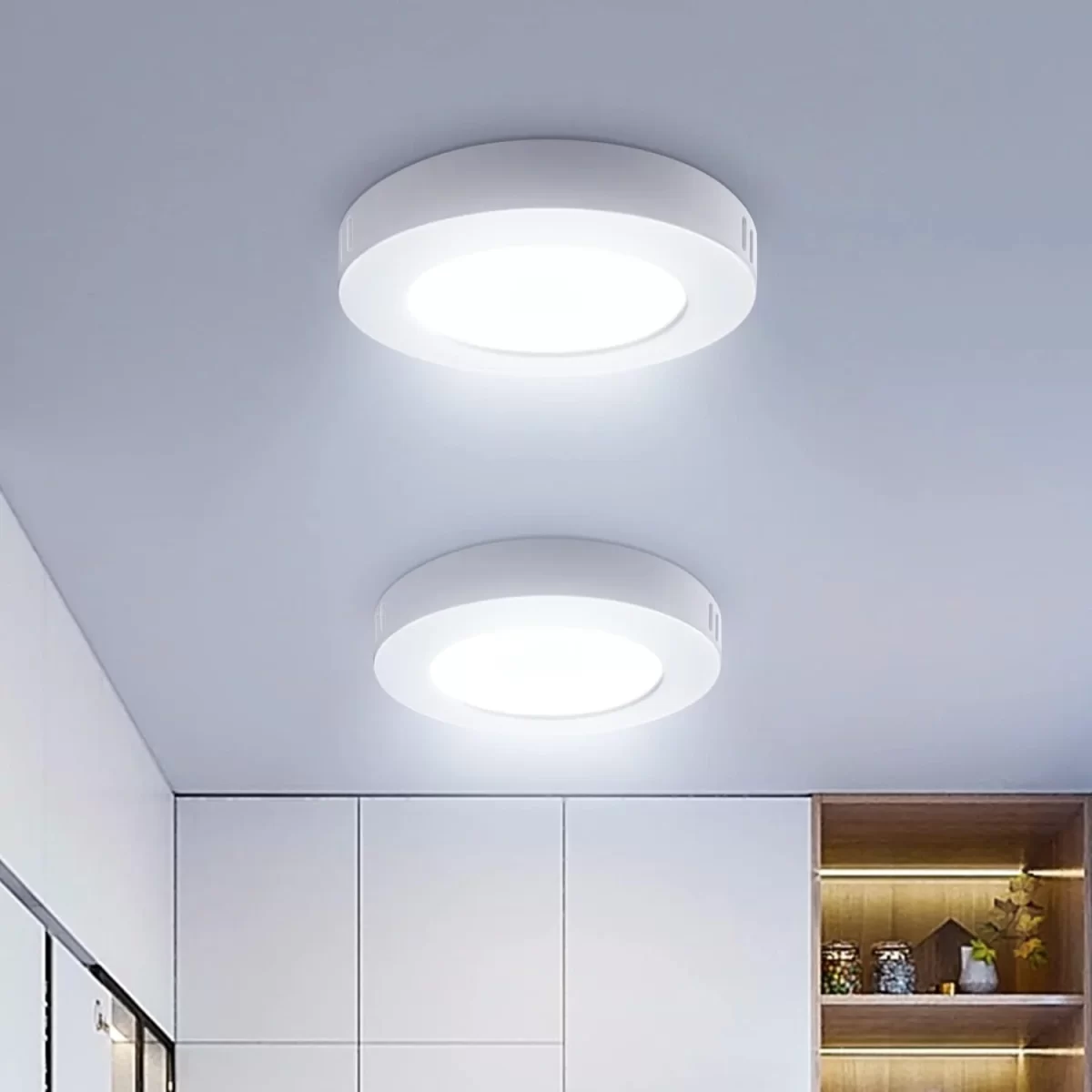A Comprehensive Guide to Choosing Ceiling Lights

Ceiling lights are more than just functional fixtures; they play a significant role in setting the tone and style of your home. Whether you’re redecorating a single room or updating the entire house, the right ceiling lights can enhance the aesthetic appeal, provide essential illumination, and contribute to the overall ambiance. This guide will help you navigate the various options and considerations when choosing ceiling lights for your home.
1. Types of Ceiling Lights
1.1 Chandeliers
Chandeliers are the epitome of elegance and grandeur. They come in various styles, from traditional crystal designs to modern, minimalist options. Ideal for entryways, dining rooms, and living areas, chandeliers can serve as a stunning focal point.
1.2 Pendant Lights
Pendant lights are versatile and can be used in various settings, including kitchens, dining rooms, and bedrooms. They hang from the ceiling by a cord, chain, or metal rod, offering focused lighting. Pendants can be grouped together for a dramatic effect or used individually for subtle illumination.
1.3 Flush Mount Lights
Flush mount lights are fixtures that are mounted directly against the ceiling, making them perfect for rooms with low ceilings. They provide general, ambient light and come in a wide range of styles and finishes to match any décor.
1.4 Semi-Flush Mount Lights
Semi-flush mount lights hang slightly below the ceiling, offering a compromise between flush mount lights and chandeliers. They are suitable for rooms with medium-height ceilings and can provide both ambient and accent lighting.
1.5 Recessed Lighting
Recessed lights, also known as can lights or downlights, are installed into the ceiling, creating a sleek, modern look. They are ideal for providing general lighting in any room and can also be used for task or accent lighting.
1.6 Track Lighting
Track lighting consists of several light fixtures attached to a single track. This system allows for flexibility in directing light to specific areas, making it ideal for kitchens, offices, and art displays.
2. Choosing the Right Bulbs
The type of bulbs you choose can significantly impact the lighting quality and energy efficiency of your ceiling lights. Consider the following options:
- LED Bulbs: These are energy-efficient, long-lasting, and available in various color temperatures.
- Halogen Bulbs: Provide bright, white light and are suitable for task lighting.
- CFL Bulbs: Energy-efficient and offer a range of color temperatures, though they may take time to reach full brightness.
- Incandescent Bulbs: Offer warm light but are less energy-efficient compared to LEDs and CFLs.
3. Color Temperature and CRI
3.1 Color Temperature
Color temperature, measured in Kelvins (K), determines the warmth or coolness of the light. For ceiling lights:
- Soft White (2700K-3000K): Creates a warm, inviting atmosphere, ideal for living rooms and bedrooms.
- Bright White (3500K-4100K): Provides a neutral, clean light, suitable for kitchens and bathrooms.
- Daylight (5000K-6500K): Mimics natural daylight, perfect for reading and detailed tasks.
3.2 Color Rendering Index (CRI)
CRI measures how accurately a light source displays colors. A CRI of 90 or above is recommended for most home lighting applications to ensure colors appear true to life.
4. Placement and Layering
Strategic placement and layering of ceiling lights can enhance functionality and create a balanced, well-lit space.
4.1 Living Room Lighting
- Use a combination of chandeliers or flush mount lights for general lighting.
- Add recessed lights or track lighting for additional illumination and accent lighting.
4.2 Kitchen Lighting
- Pendant lights over the island or dining area provide task lighting.
- Recessed lights or track lighting can offer general illumination.
- Under-cabinet lights enhance visibility for food preparation.
4.3 Bedroom Lighting
- A chandelier or semi-flush mount light can serve as the central fixture.
- Add bedside pendant lights or wall sconces for reading.
- Consider dimmable lights to create a relaxing atmosphere.
5. Safety and Installation
When installing ceiling lights, ensure they are properly secured and wired to avoid accidents and electrical issues. It’s advisable to hire a licensed electrician for installation, especially for complex fixtures like chandeliers and track lighting.
6. Trends in Ceiling Lighting
Keeping up with trends can inspire your ceiling light choices. Current trends include:
- Minimalist Designs: Sleek, simple fixtures that blend seamlessly with modern décor.
- Industrial Styles: Fixtures with exposed bulbs and metal finishes.
- Smart Lighting: Integration with smart home systems for remote control and automation.
Conclusion
Choosing the right ceiling lights involves a blend of functionality, style, and safety. By understanding the different types of fixtures, bulb options, and placement strategies, you can create a well-lit and aesthetically pleasing home. Whether you prefer the elegance of chandeliers, the versatility of pendant lights, or the modern look of recessed lighting, the perfect ceiling light can enhance both the beauty and practicality of your living spaces.









